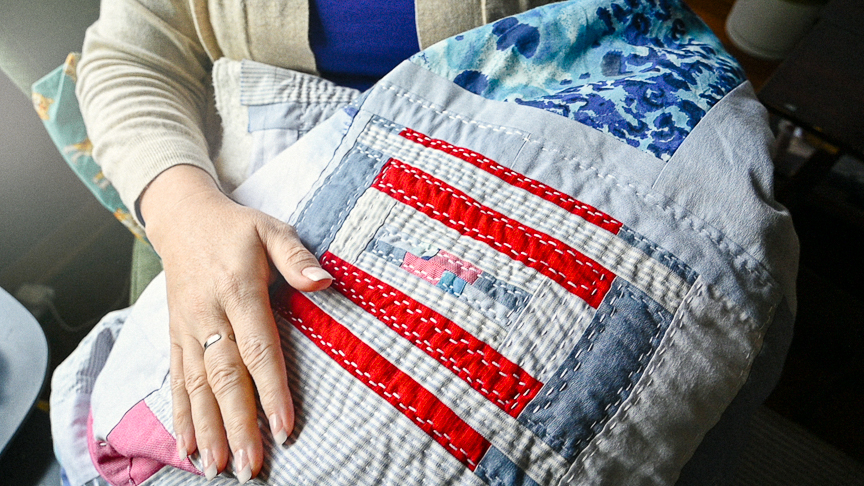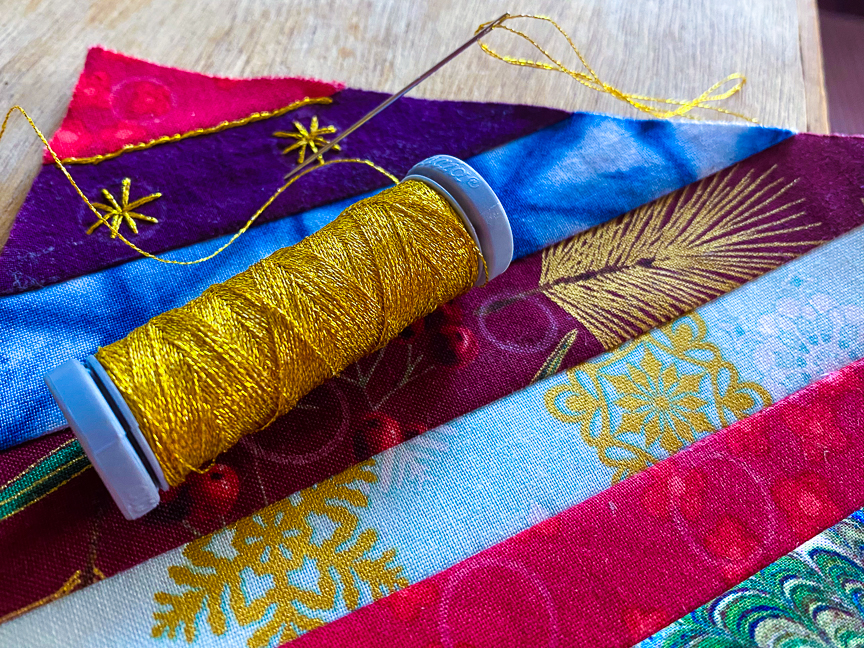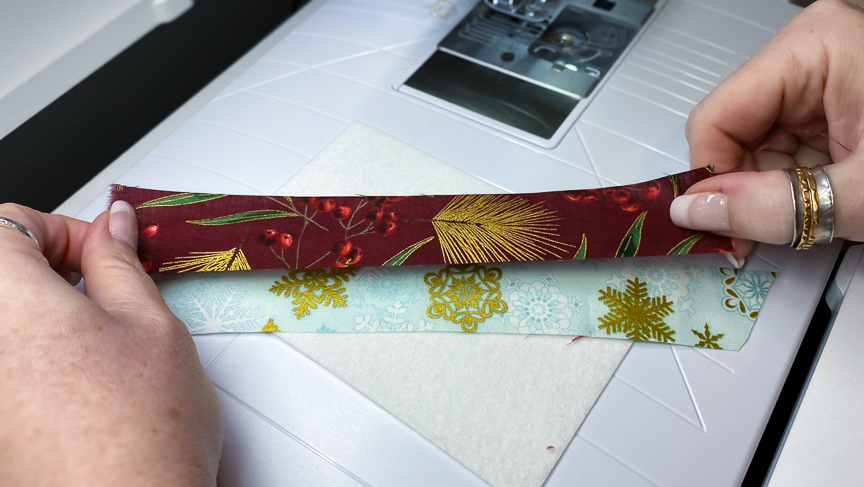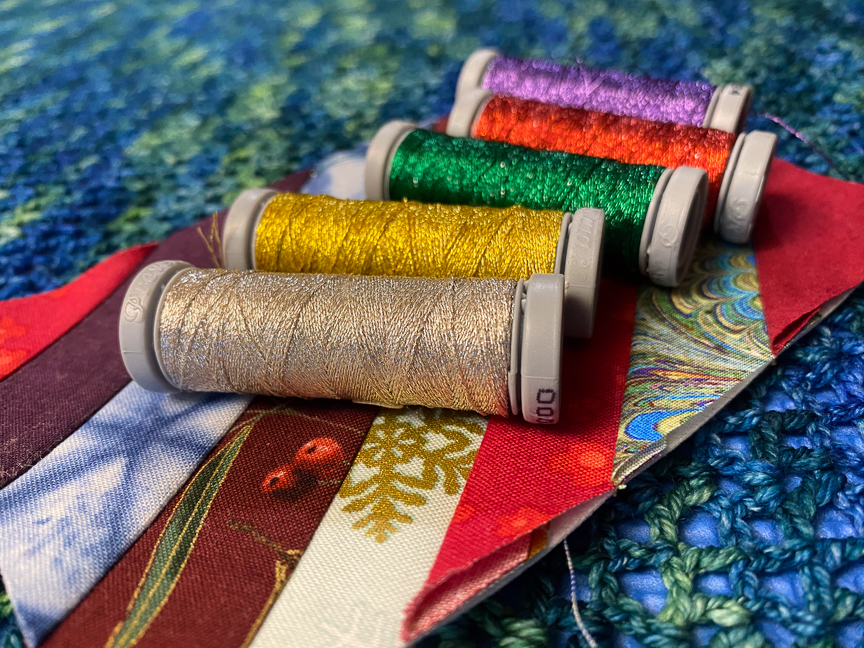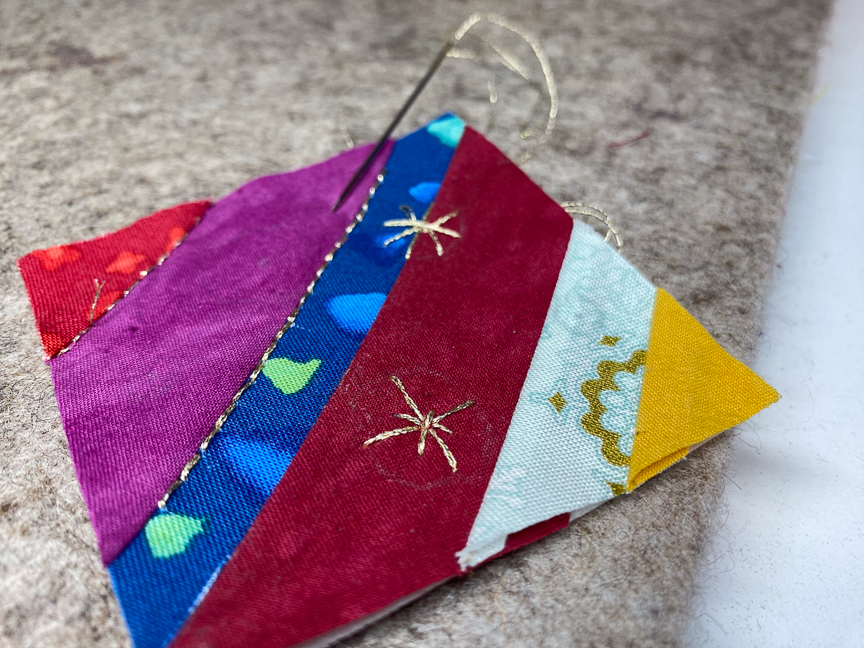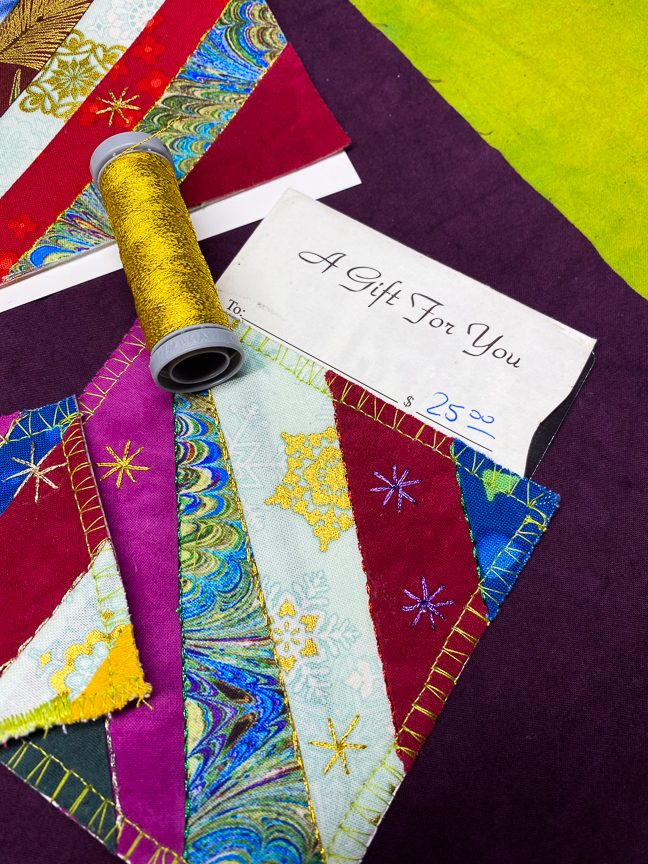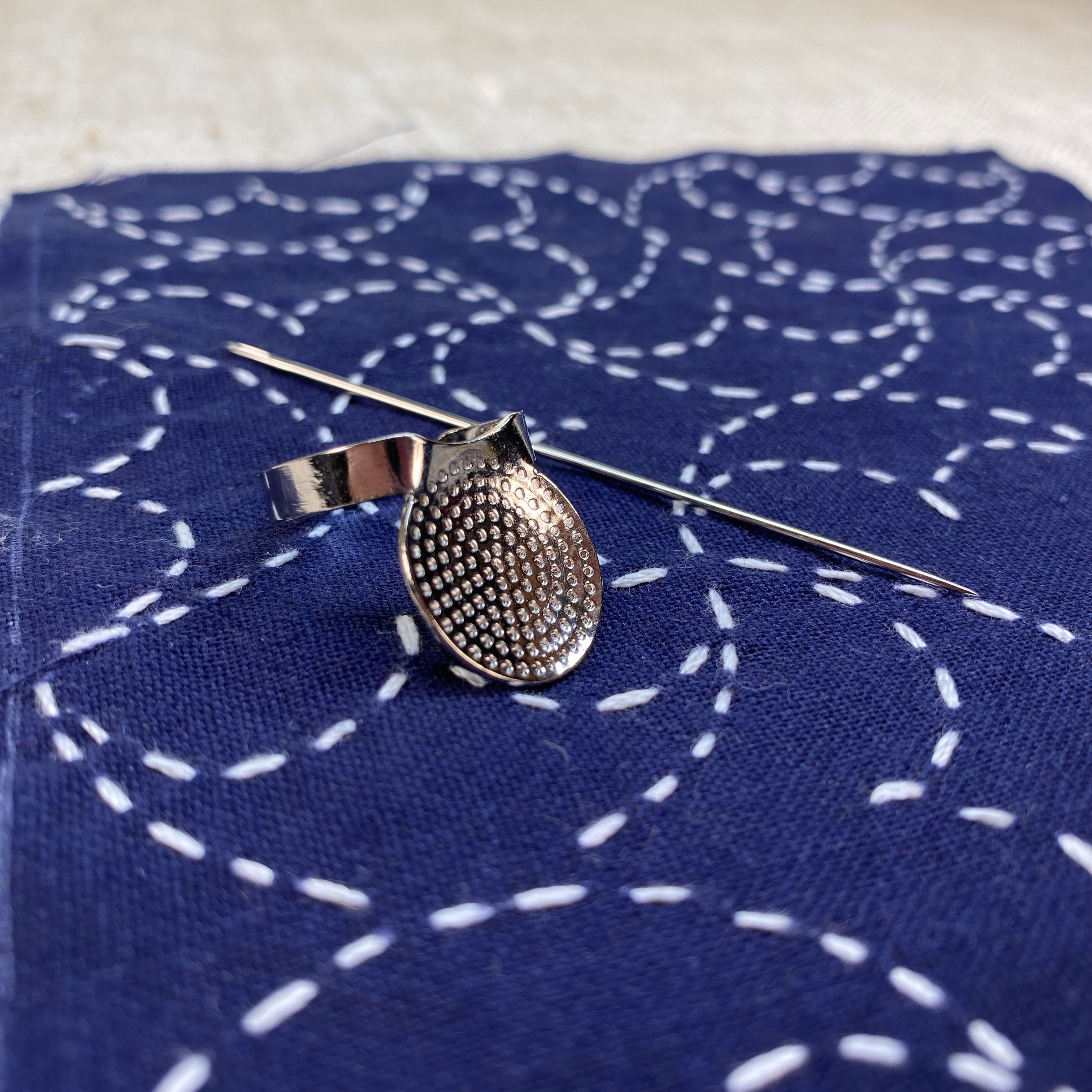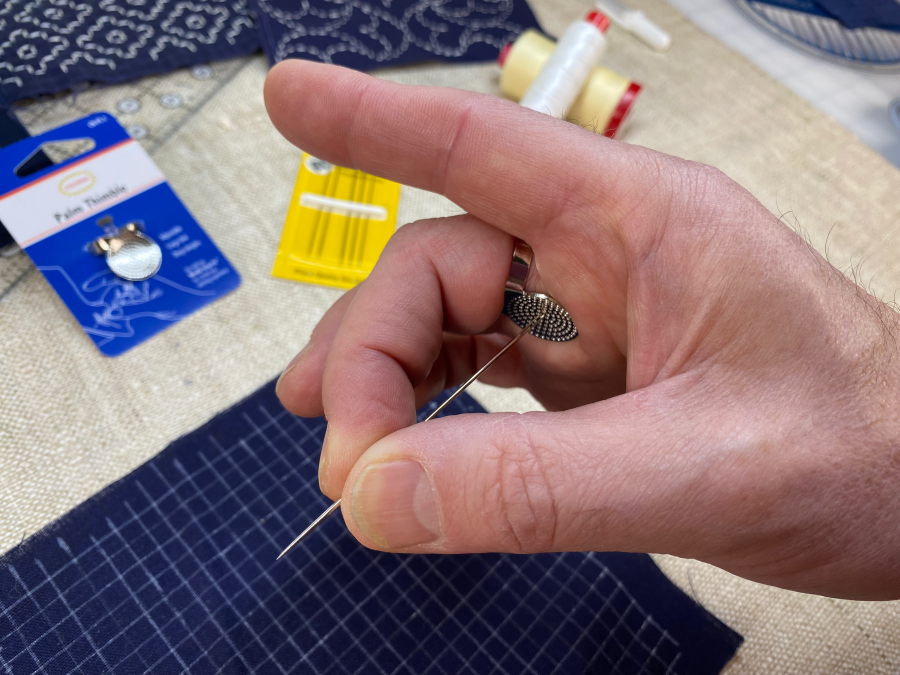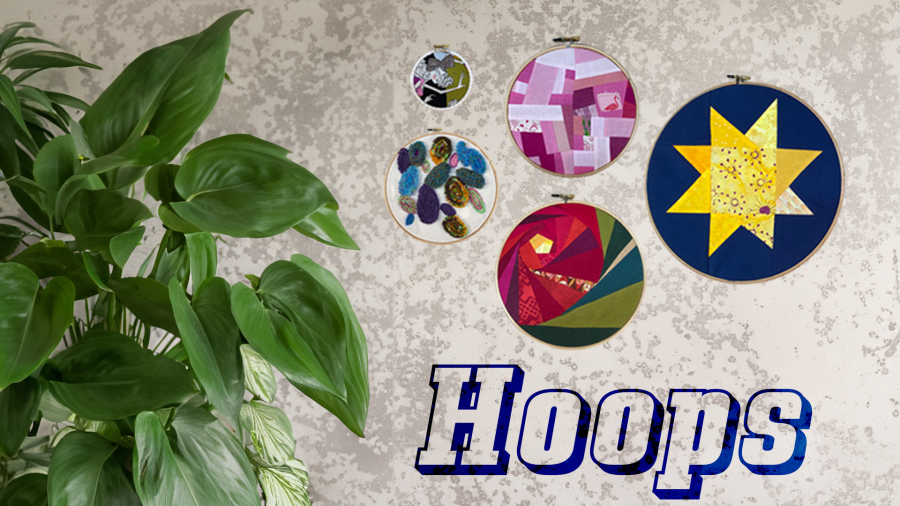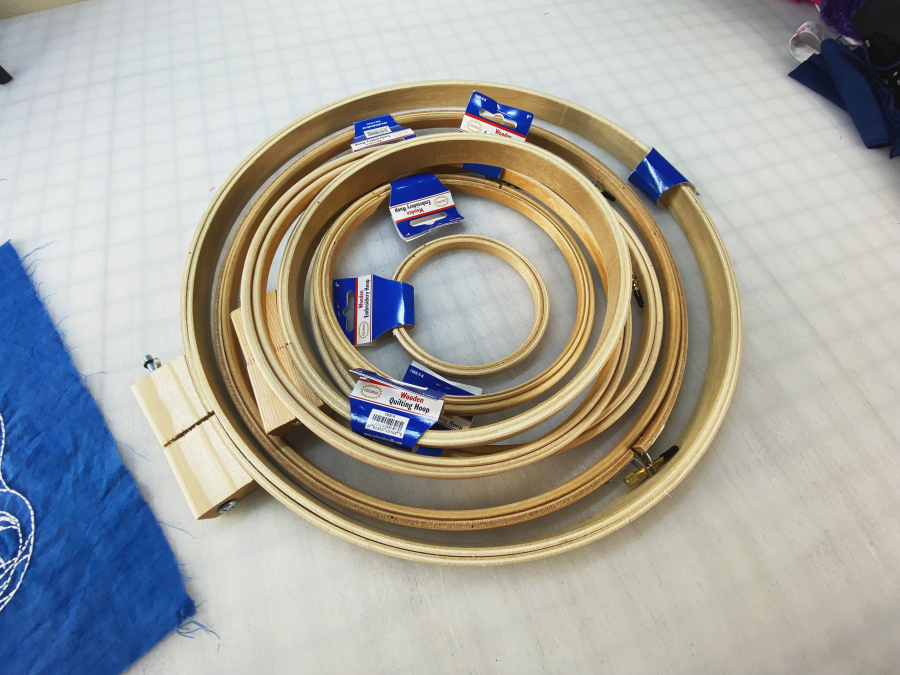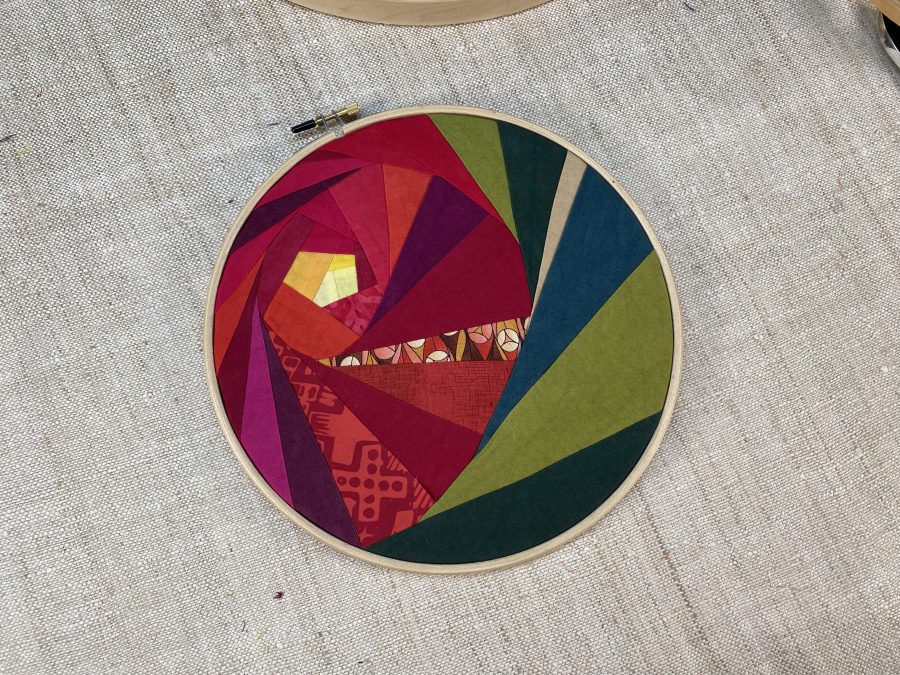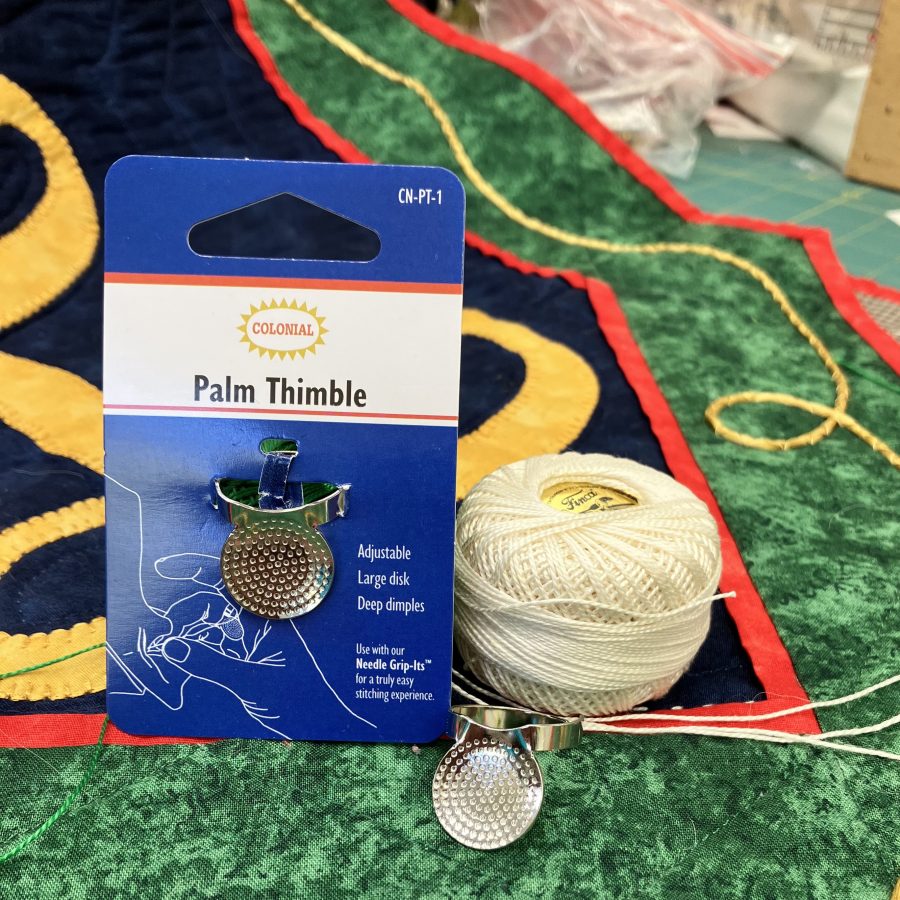
How I do love working with my hands; sewing, rug hooking, planting seeds, and pulling weeds! I have information for you about some nifty notions and tips that can be helpful for hand sewers, whether newbies or experienced, and those in between.
Raise your dominant hand if you use a thimble!
Now, raise your other hand if you gave up hand sewing because your hands and fingers are painful whenever you hand stitch…
Perhaps you have never used a thimble, and your fingers are sore from jabs. Do I have two wonderful adaptive notions and tips for using them to help you enjoy hand sewing!! My hands and fingers are “wonky” from years of stitching and pulling a needle through fabric and pushing downward with a thimble. Check out the photo below for a definition of wonky hands.
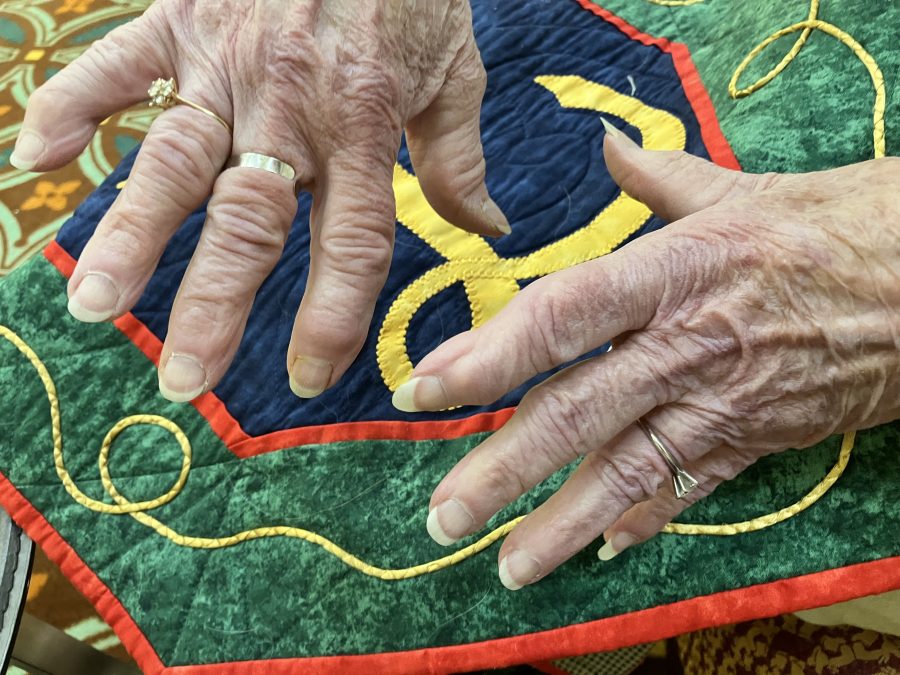
Yes, they are mine, and they are not a pretty site. However, I can now enjoy hand sewing until the cows come home and the chickens lay eggs thanks to a couple of great Colonial Needle products I am eager to share with you!
Nifty Notion #1: Needle Grip-Its
How I wish I had known about these wonderful little sticky dots years ago, before my hands and fingers began to hurt and look a little lopsey. The repetitive motion of inserting a needle into fabric and pulling the needle out on the other side can cause pain and discomfort over time. There are a couple helpful tips for applying these small adhesive circles:
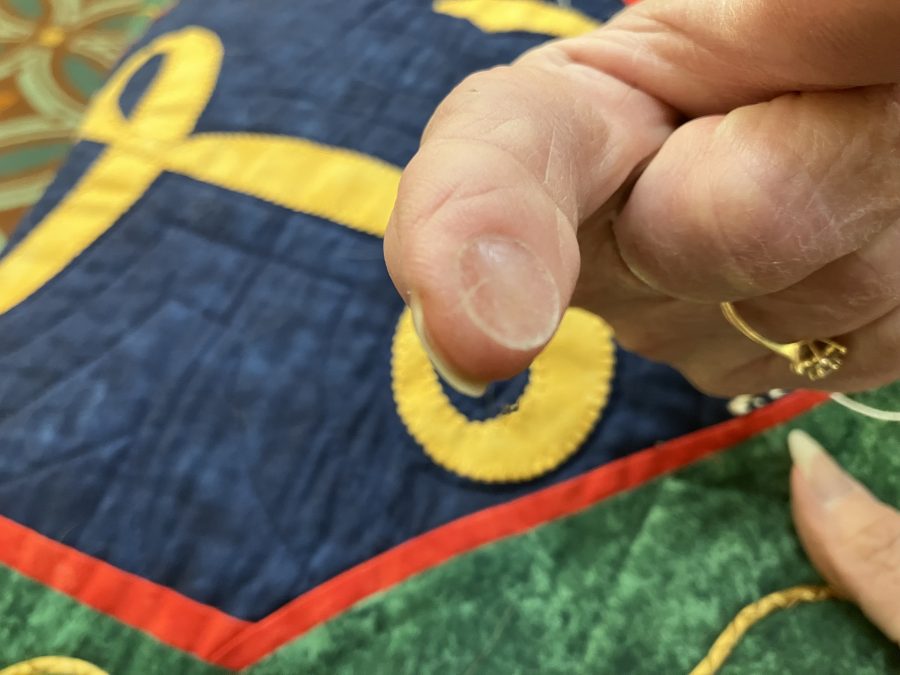
- On your needle-holding hand, pretend you are gripping a needle with your forefinger and thumb. Now separate them and notice a round circle on the tips of your forefinger and thumb. Then, place an adhesive Needle Grip-It dot on each slightly indented round circle on your fingertip and thumb tip.
- Press your forefinger and thumb together, and now you are ready to insert the needle into the fabric, pull the needle out, and enjoy hand stitching. The grips are not sticky to your needle, and are most unobtrusive while stitching. They will also stay on through several hand washings if you are fortunate enough to sit and stitch until your cows come home and chickens lay eggs!
- I highly recommend using Needle Grip-Its if you are a newbie, a beginning hand stitcher as well as if you have been hand sewing for years, but decided to give it up due to pain in your hands. I happily carry sheets of extra Needle Grip-Its with me to share with friends. They are a Nifty Notion that keep giving and giving lots of joy when hand sewing.
Nifty Notion #2: Colonial Palm Thimble
Yes, when I first saw this thimble, I wondered just how helpful it would and could be, as it looks a little awkward. However, I am so happy that I tried it out! I also highly recommend it for those who are newbies to hand sewing, in-betweeners who have been hand sewing for a while, life-time hand sewers, and those who flat out refuse to try using a thimble!! Those of you who have callouses on your needle pushing fingers will thank me for it as well. Here are some tips after you apply Needle Grip-it:
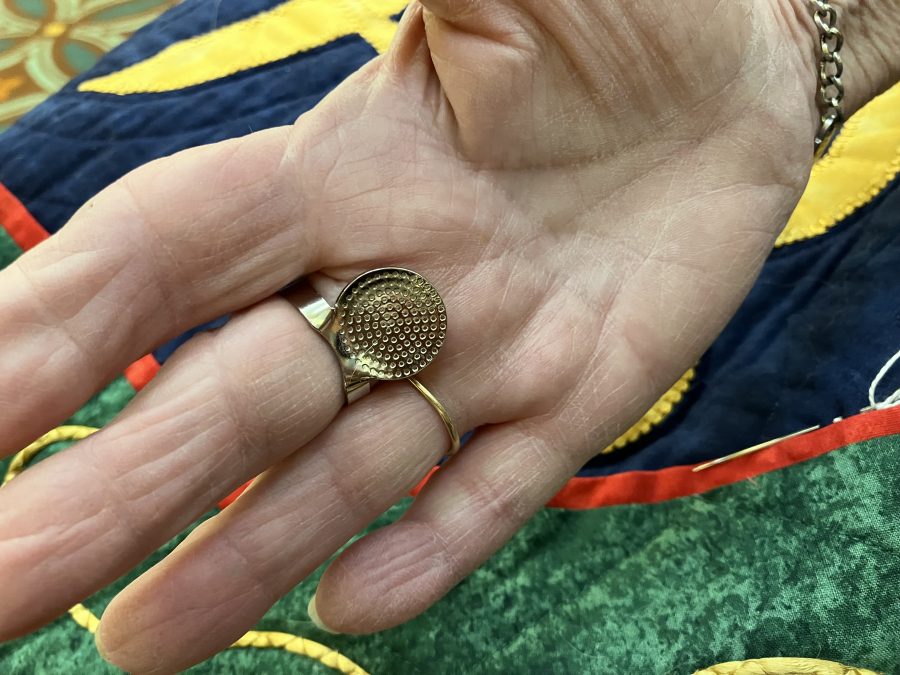
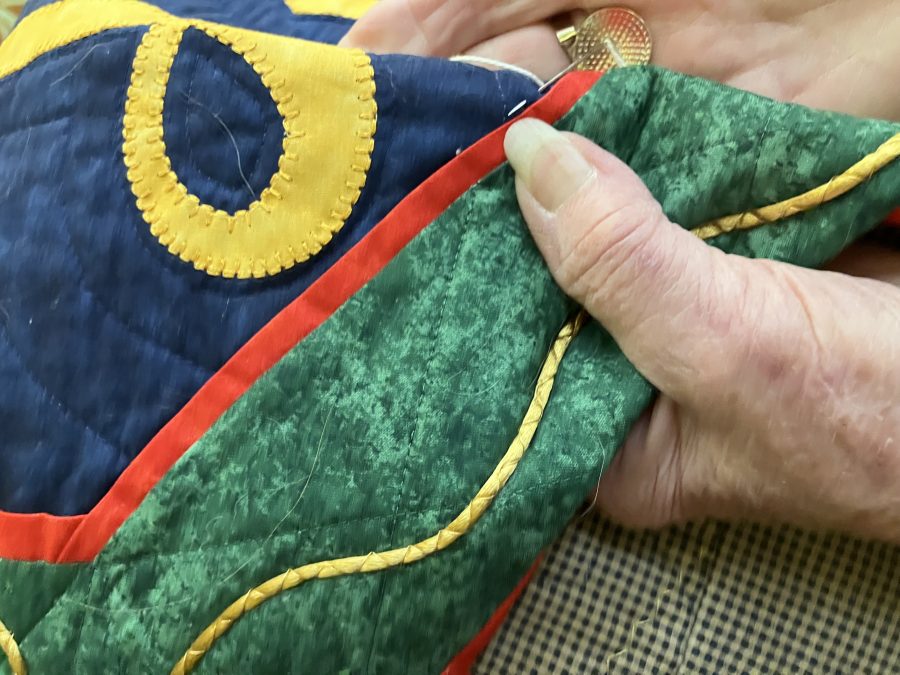
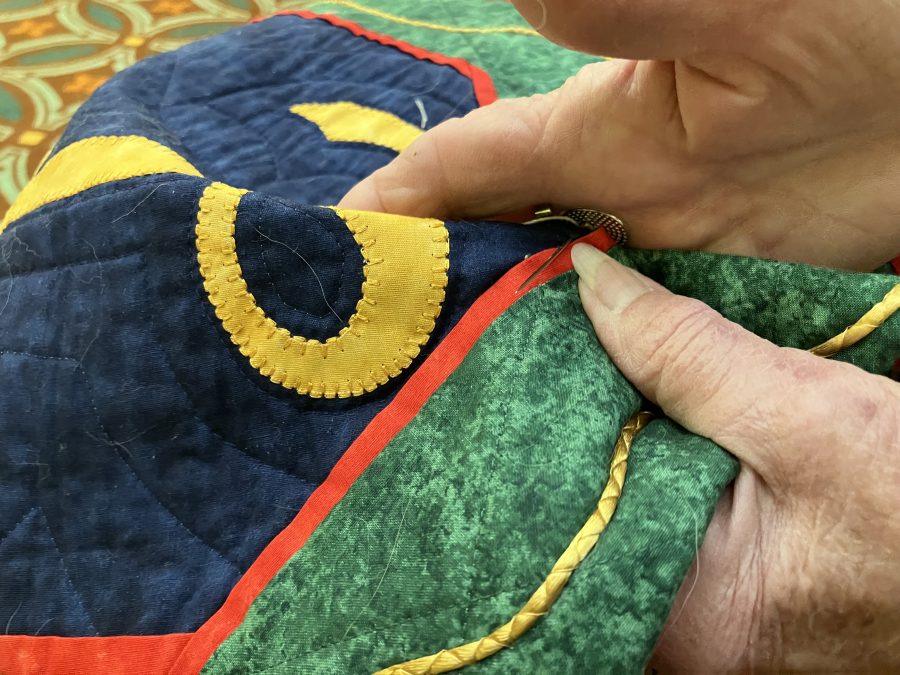
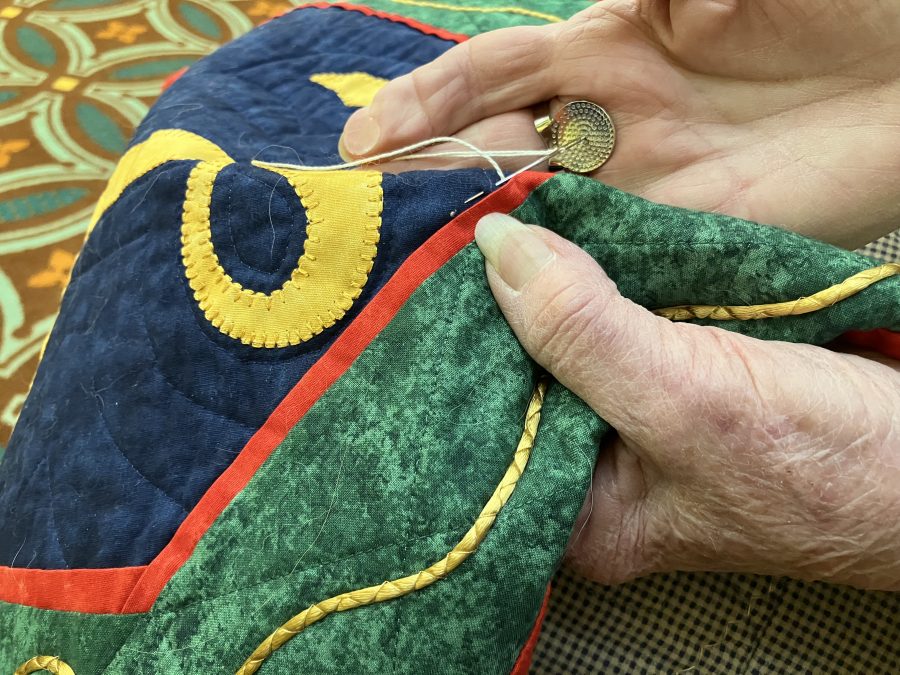
- The metal band is adjustable for any and size or finger.
- The large metal disc with dimples comfortably fits in the palm of your hand and easily helps guide the push of your needle.
- Push with the palm of your hand. That larger hand motion to the side is better for your hands, especially over time. I experience no hand fatigue or pain. It is rather like catching a volley ball is much easier than catching a ping pong ball.
- The large metal disc with dimples comfortably fits in the palm of your hand and easily helps guide the push of your needle.
Nifty Notion #3: Lap pillow and small sharp pointy scissors
Unless I am quilting on a floor frame or a lap frame, I place a pillow on my lap to rest my arms and assist in directing my stitching as well as cutting threads. I accidentally cut a little hole in one of my mother’s quilts on a floor frame, and also recommend using small scissors with very sharp points for cutting threads. Cutting threads with the sharp tips of small scissors help prevent accidental snips and feeling so badly.
I hope to continue stitching ALAP: As Long As Possible! These wonderful nifty notions are small but sometimes small things can make a big difference. I also recommend them for all ages and stages of hand stitchers. Perhaps my hands would not be a wonky today if I had Needle Grip-Its and a Palm Thimble when I began hand sewing on a dishtowel at age three, under the loving wings of my dear grandma. My first memory of using a thimble was awkward, but pushing a needle without one was painful and my fingers were pricked and sore which limited the fun of sewing that I enjoyed. Whenever I hear a friend say she or he no longer hand sews because of painful fingers and hands, I happily pass along Nifty Notions and Tips for being able to return to the joy of hand sewing until you see the cows or collect the eggs.
Happy hand sewing, on and on and on,
Judy Moore Pullen



